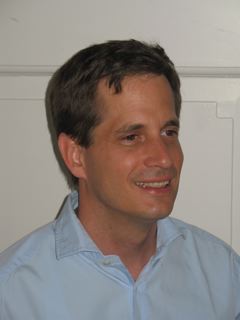The Theory of Causal Fermion Systems
The Fermionic Signature Operator
Prerequisites
Continue Reading
Related Topics
The Fermionic Signature Operator
Given a measurable subset $\Omega \subset M$ with the property that
\[ \int_\Omega \|x\|\: d\rho(x) < \infty \:, \]
the fermionic signature operator $\mathscr{S}_\Omega$ is defined by
\[ \mathscr{S}_\Omega := \,\! – \int_\Omega x\: d\rho(x) \:. \]
It is a bounded symmetric operator on $\H$. Equivalently, the fermionic signature operator is characterized by the relation
\[ \la u \,|\, \mathscr{S}_\Omega \,v \ra = \int_\Omega \Sl \psi^u(x) | \psi^v(x) \Sr_x\: d\rho(x) \]
(as follows directly from the definitions of the spin inner product and the physical wave functions). Therefore, it arises as the signature operator when representing the Krein inner product in $\Omega$ in terms of the scalar product. The fermionic signature operator of the whole spacetime is defined by $\mathscr{S}=\mathscr{S}_M$, provided that the first integral above is finite for $\Omega=M$.
The fermionic signature operator $\mathscr{S}_\Omega$ encodes information on the geometry of the set $\Omega$. It can also be defined in a Lorentzian spacetime (for details and the precise connection to causal fermion systems see [finite13, Section 4]). It gives a setting for spectral geometry with Lorentzian signature (see [drum14]). From the perspective of causal fermion systems, the point of interest is that the geometric information encoded in the fermionic signature operator of a Lorentzian spacetime can be used to define corresponding geometric quantities of the causal fermion system (see [drum14, Section 1.4]).
We remark for clarity that in the setting of globally hyperbolic Lorentzian geometry, the fermionic signature operator can be defined also in certain spacetimes of infinite lifetime using the so-called mass oscillation property (see [infinite13]). The resulting fermionic projector gives a canonical decomposition of the Dirac solution space into two subspaces, thereby generalizing the frequency splitting in the Minkowski vacuum (see [hadamard15]). This decomposition can be used for the construction of causal fermion systems. However, in the case of spacetimes of infinite lifetime, the fermionic signature operator of the resulting causal fermion systems is in general ill-defined.
We finally remark that in [index14] the so-called chiral index of the fermionic signature operator is introduced (for the connection to causal fermion systems see [index14, Section 5] or [drum14, Section 1.4]).

Felix Finster
Author